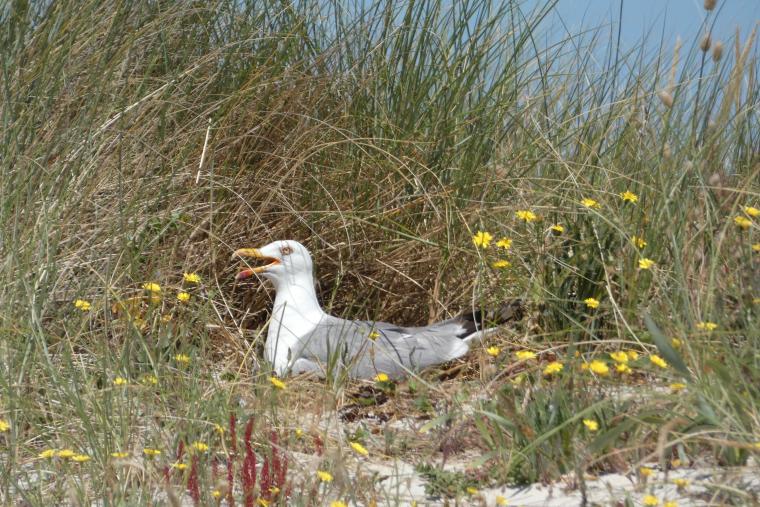GULLS PROMOTE MULTI-SPECIES COLONIES AS THEY LEAVE FORMER REFUGES
Submitted by Michi on 24 October 2025.
 Get the paper!
Get the paper! Photo above: Yellow-legged gull. Phot credit: Nicolás Ron Arroyo
The yellow-legged gull (Larus michahellis) is often considered an over-abundant pest species. This stems from the belief that the gull population is growing and expanding into cities, causing negative consequences to wildlife and disrupting human life. However, this is not entirely correct. Yellow-legged gulls have been decreasing rapidly in recent years, and at the same time have abandoned their historical refuges (remote islands) and are moving to more human-accessible islands and to urban areas, where they find an easier life.
In parallel there has been a large-scale process of human depopulation of rural areas in Europe since at least the 1960s. The ecological consequences and conservation implications of this process have been well identified in some southern European countries, and are known to include a) the encroachment of shrubs and trees into abandoned farmland, b) the expansion of previously persecuted large ungulates and mammalian carnivores c) the abandonment of breeding refuges by formerly persecuted wildlife and d) the loss of fear to humans.
The abandonment of ecological refuges by gulls to breed in places more accessible to humans (such as cities) is thought to have occurred as a consequence of the decrease in direct persecution by humans who, for decades, plundered their eggs, forcing gulls (and other species) to breed in inaccessible places (refuge).
In our study, we test the hypothesis of refuge abandonment in the yellow-legged gull, as a result of the human rural exodus, and analyse the role of the species as an honest indicator of the quality of formerly empty sites, leading to the formation of multi-species waterbird colonies.
Fig. 4 from the article: Conceptual model that aims to show the process of colonization of human-accessible islets that were formerly empty due to anthropogenic disturbance (based on data from Pedregoso I.)
To test this hypothesis we used the available data on yellow-legged gull populations over the past forty years in the northwest of the Iberian Peninsula (Galicia). We grouped colonies according to site typology (human-accessible vs. inaccessible), and we detected a marked population decline in inaccessible sites, as opposed to accessible sites, where colonization coincides with refuge abandonment over time.
Fig. 2 from the article: (A) Number of yellow-legged gull pairs over time (1976–2022), breeding in human-inaccessible sites (i.e. island cliffs). The vertical solid black line: closure of Vigo landfills. Vertical dashed black line: Establishment of the Atlantic Island National park. (B) Number of breeding pairs of yellow-legged gull over time (1976–2021) breeding in human-accessible islets. The vertical solid black line: closure of Vigo landfills. Vertical dashed black line: first cases of detection paretic syndrome in gulls. (C) Number of yellow-legged gull pairs over time (1977–2019) breeding in the urban area of Vigo city. The horizontal dash black line: stabilization of Vigo city around 280 000–300 000. From 1981 to 2023 the population growth rate, ranged between 0.99 and 1.05 (λ = 1).
The colonization of empty accessible sites by gulls acts as a quality clue for other species through heterospecific attraction. We have detected subsequent colonization of gull colonies in human-accessible sites so far by Eurasian oystercatchers, great black-backed gull, and little egrets, which find a safe breeding site among gulls. Some other species may colonize in the future as have repeatedly been observed during the breeding season at colonies (spoonbills, Eurasian curlew).
Our work provides support for the refuge abandonment hypothesis and shows the positive value of yellow-legged gulls as cores of multi-species colony formation - far from the common view of gulls as pests.